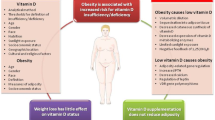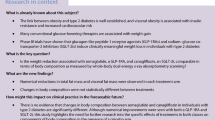Abstract
Background
Low serum levels of vitamin D are associated with metabolic syndrome. Participants in NHANES III with unexplained elevation in ALT levels have high prevalence of metabolic syndrome. We hypothesized that the serum concentrations of vitamin D were inversely associated with unexplained elevation in ALT.
Methods
A total of 6,826 fasting subjects underwent morning physical examination and met the inclusion and exclusion criteria. From these participants, we have constructed cases with unexplained elevation in ALT (n = 308) and compared their serum vitamin D concentrations to matched controls with normal ALT (N = 979). We examined the prevalence of unexplained elevation in ALT level across different quartiles of vitamin D levels.
Results
Participants with unexplained elevation in ALT had significantly lower serum vitamin D levels compared to controls (61.8 ± 26.0 nmol/l vs. 66.8 ± 27.1 nmol/l, P < 0.01). The unadjusted prevalence of unexplained elevation in ALT in patients with highest to lowest quartiles of serum vitamin D levels were 21.4, 21.4, 25.6, and 31.5%, respectively. Compared to lowest quartile, patients with top two quartiles of serum vitamin D levels had significantly lower prevalence of unexplained elevation in ALT (OR, 95% CI for highest quartile 0.62 [0.43–0.89] and for third quartile 0.61 [0.42–0.86]). This relationship persisted even after controlling for metabolic syndrome, insulin resistance, and serum triglycerides.
Conclusions
This study suggests a significant inverse relationship between serum vitamin D levels and unexplained elevation in ALT. Further studies are needed to confirm this observation and to understand the basis for and implications of this observation.
Similar content being viewed by others
References
Mertens PR, Muller R. Vitamin D and cardiovascular risk. Int Urol Nephrol. 2010;42:165–171.
Zittermann A. Serum 25-Hydroxyvitamin D response to oral vitamin D intake in children. Am J Clin Nutr. 2003;78:496–497.
Chonchol M, Scragg R. 25-Hydroxyvitamin D, insulin resistance, and kidney function in the third national health and nutrition examination survey. Kidney Int. 2007;71:134–139.
Baz-Hecht M, Goldfine AB. The impact of vitamin D deficiency on diabetes and cardiovascular risk. Curr Opin Endocrinol Diabetes Obes. 2010;17:113–119.
Ford ES, Ajani UA, McGuire LC, Liu S. Concentrations of serum vitamin D and the metabolic syndrome among US adults. Diabetes Care. 2005;28:1228–1230.
Chiu KC, Chu A, Go VL, Saad MF. Hypovitaminosis D is associated with insulin resistance and beta cell dysfunction. Am J Clin Nutr. 2004;79:820–825.
Angulo P. GI epidemiology: nonalcoholic fatty liver disease. Aliment Pharmacol Ther. 2007;25:883–889.
Vanni E, Bugianesi E, Kotronen A, De MS, Yki-Jarvinen H, Svegliati-Baroni G. From the metabolic syndrome to NAFLD or vice versa? Dig Liver Dis. 2010;42:320–330.
Liangpunsakul S, Chalasani N. Unexplained elevations in alanine aminotransferase in individuals with the metabolic syndrome: results from the third National Health and Nutrition Survey (NHANES III). Am J Med Sci. 2005;329:111–116.
Centers for Disease Control and Prevention. National Health and Nutrition Examination Survey. http://www.cdc.gov/nchs/nhanes.htm. Accessed 1 January 2010.
Executive Summary of the Third Report of the National Cholesterol Education Program. Expert panel on detection, evaluation, and treatment of high blood cholesterol in adults (adult treatment panel III). JAMA. 2001;285:2486–2497.
Chobanian AV, Bakris GL, Black HR, et al. The seventh report of the joint national committee on prevention, detection, evaluation, and treatment of high blood pressure: the JNC 7 report. JAMA. 2003;289:2560–2572.
Bordelon P, Ghetu MV, Langan RC. Recognition and management of vitamin D deficiency. Am Fam Physician. 2009;80:841–846.
Ruhl CE, Everhart JE. Determinants of the association of overweight with elevated serum alanine aminotransferase activity in the US. Gastroenterology. 2003;124:71–79.
Cohen-Lahav M, Douvdevani A, Chaimovitz C, Shany S. The anti-inflammatory activity of 1,25-dihydroxyvitamin D3 in macrophages. J Steroid Biochem Mol Biol. 2007;103:558–562.
Oh J, Weng S, Felton SK, et al. 1,25(OH)2 vitamin d inhibits foam cell formation and suppresses macrophage cholesterol uptake in patients with type 2 diabetes mellitus. Circulation. 2009;120:687–698.
Oleson CV, Patel PH, Wuermser LA. Influence of season, ethnicity, and chronicity on vitamin D deficiency in traumatic spinal cord injury. J Spinal Cord Med. 2010;33:202–213.
Greene-Finestone LS, Berger C, de Grof M, et al. 25-Hydroxyvitamin D in Canadian adults: biological, environmental, and behavioral correlates. Osteoporos Int. 2010;35:256–264.
Acknowledgments
This study was supported by Veterans Administration Young Investigator Award/Indiana Institute for Medical Research, K08 AA016570 from the NIH/NIAAA, Central Society for Clinical Research Career Development Award, and Research Support Fund Grant from IUPUI Office of Vice Chancellor for Research (all to S.L.) and K24DK069290 from NIH/NIDDK (to N.C.).
Conflicts of interest
No conflicts of interest exist.
Author information
Authors and Affiliations
Corresponding author
Rights and permissions
About this article
Cite this article
Liangpunsakul, S., Chalasani, N. Serum Vitamin D Concentrations and Unexplained Elevation in ALT Among US Adults. Dig Dis Sci 56, 2124–2129 (2011). https://doi.org/10.1007/s10620-011-1707-x
Received:
Accepted:
Published:
Issue Date:
DOI: https://doi.org/10.1007/s10620-011-1707-x




